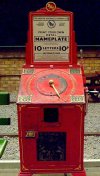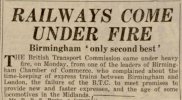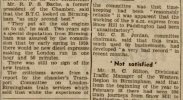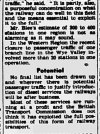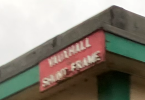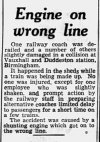-
Welcome to this forum . We are a worldwide group with a common interest in Birmingham and its history. While here, please follow a few simple rules. We ask that you respect other members, thank those who have helped you and please keep your contributions on-topic with the thread.
We do hope you enjoy your visit. BHF Admin Team
You are using an out of date browser. It may not display this or other websites correctly.
You should upgrade or use an alternative browser.
You should upgrade or use an alternative browser.
The Railways
- Thread starter Ray Griffiths
- Start date
mw0njm.
A Brummie Dude
Richard Dye
master brummie
What a blast from the past! I never remember it being that expensive & I always seemed to mess up the letters!
Radiorails
master brummie
well, it would not have cost 10p in 1950. It was about 20 years before the decimalization rip-off happened.
mw0njm.
A Brummie Dude
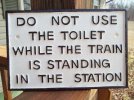
toilets on UK trains
In UK trains built before 1980, ‘direct discharge technology’ was used for the toilets – basically they emptied straight onto the track, with the aid of water flushed from a tank. That changed in 1981 when the first train carriages with retention tanks were supplied. Yet it wasn’t until 1996 that all new rolling stock was fitted with tanks for effluent retention. And in 2018 10% of Britain’s train carriages were still disposing toilet waste straight onto the railway tracks.
Richard Dye
master brummie
I remember those signs........It's hard to believe that retention tanks were not made mandatory much earlier! :-(View attachment 190222
toilets on UK trains
In UK trains built before 1980, ‘direct discharge technology’ was used for the toilets – basically they emptied straight onto the track, with the aid of water flushed from a tank. That changed in 1981 when the first train carriages with retention tanks were supplied. Yet it wasn’t until 1996 that all new rolling stock was fitted with tanks for effluent retention. And in 2018 10% of Britain’s train carriages were still disposing toilet waste straight onto the railway tracks.
Richard Dye
master brummie
Movin right along!wow they are giving it some wellie

mw0njm.
A Brummie Dude
Cross City Line passengers in Birmingham are travelling on a new fleet of trains from today (Monday 15 April).The Class 730s will run in pairs, with every train having six carriages and being capable of carrying more than a thousand passengers.
WMR Class 730 at Aston station 2024
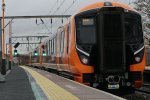
West Midlands Railway Class 730 train. // Credit: West Midlands Railway
WMR Class 730 at Aston station 2024

West Midlands Railway Class 730 train. // Credit: West Midlands Railway
Lloyd
master brummie
So the New Street to Euston line was modernised and electrified and the Snow Hill route abandoned and the station demolished. Way to go, BR!The state of the railways in February 1960.
(Birmingham Weekly Post)
View attachment 191815
View attachment 191816
View attachment 191817
Mark Tooze
master brummie
What is a " Shunt Frame" Mark?Aston Signaling Centre en-route to New St Station:-
View attachment 191952
Look to the right of the door - it still has its original "Vauxhall Shunt Frame" sign!
View attachment 191953
I wonder if this is the only genuine signal box still working in the Birmingham area? Off the top of my head I cannot think of another one.......
Mark Tooze
master brummie
I think it was the signal box that controlled the (then extensive) carriage sidings in and around Vauxhall and Duddeston Station - but not 100% sure! Use for shunting purposes only - not for actual trains.
Note - most of the track for these either side of the station is still extant under the trees and undergrowth.
Note - most of the track for these either side of the station is still extant under the trees and undergrowth.
Thanks Mark. I know the route fairly well and do look at all the old track etc. There was a big goods yard in Erdington too.I think it was the signal box that controlled the (then extensive) carriage sidings in and around Vauxhall and Duddeston Station - but not 100% sure! Use for shunting purposes only - not for actual trains.
Note - most of the track for these either side of the station is still extant under the trees and undergrowth.
Pedrocut
Master Barmmie
Aston Signalling Centre/Vauxhall Shunt Frame opened in 1957 as Vauxhall (prefix VL) with a 100 lever mechanical frame. The box is a British Rail London Midland Region design, 'Type 15' (size number 12). Type 15 signal boxes were designed to be modular so that structures of various sizes could be built. Similar Type 15 signal boxes also opened in 1957 at Chapel-en-le-Frith, Deansgate Junction & Wigton.
(The Branch Line Society)
www.branchline.uk/fixture-report.php?id=379
(The Branch Line Society)
www.branchline.uk/fixture-report.php?id=379
Last edited:
Rod Liddiard
All Systems Go.
14th July 1951 this locomotive arrived at Birmingham. 46223 Pricess Alice is at the head of a train from the Wolverhampton direction, she is just clear of Navigation St bridge. The loco was built at Crewe 31/07/1937 and was
View attachment 184991



